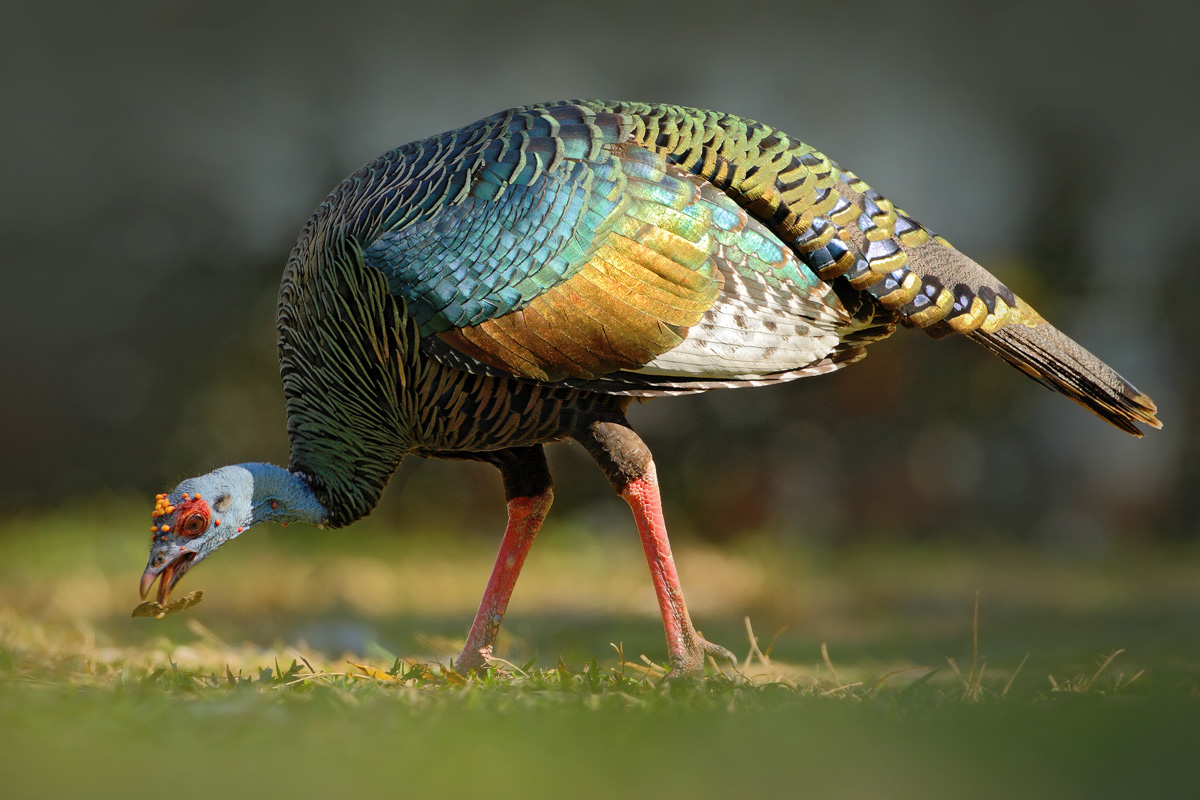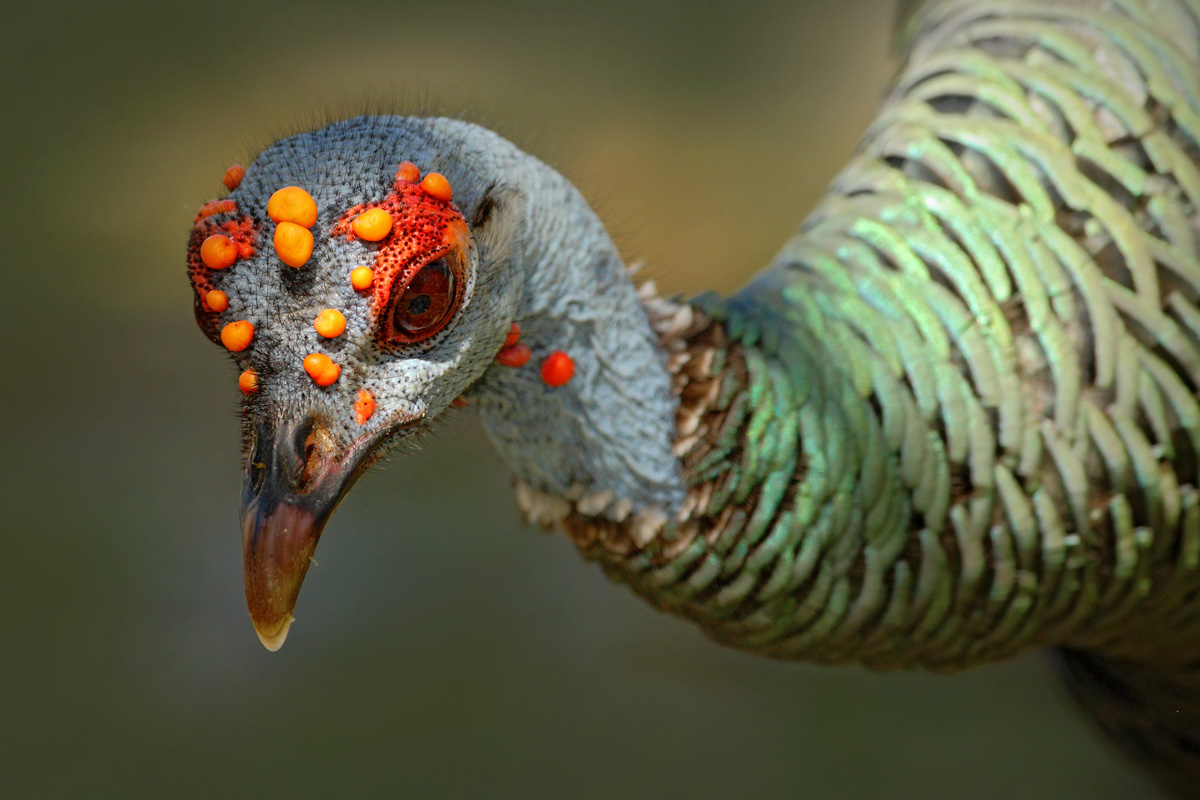Birdwatch: Technicolor Turkey Sports Iridescent Feathers
You won't find the ocellated turkey (Meleagris ocellata) on any Thanksgiving plates, but that's probably for the best. The tropical bird is "near threatened" in its native home in Mexico's Yucatán Peninsula, northern Belize and northern Guatemala, according to the International Union for Conservation of Nature.
"They're absolutely gorgeous," said John Fitzpatrick, director of the Cornell Lab of Ornithology in Ithaca, New York. "The colors, they leave our [North American] turkey in the dust." [10 Terrific Turkey Facts]
The ocellated turkey belongs to the same genus as the North American wild turkey (Meleagris gallopavo), but the colorful bird is a different species. "It looks superficially like our turkey, but it is quite different in color, behavior and habitat," Fitzpatrick told Live Science.
For starters, the North American wild turkey has five subspecies: eastern, Florida, grande, Merriam's and Gould's. The males (called gobblers or toms) of each of these subspecies can get quite large, up to 25 lbs. (11 kilograms), and they have a red head and an iconic red wattle, Fitzpatrick said.
That's not the case for the smaller M. ocellata, which lacks a wattle. Rather, the males and females of M. ocellata look remarkably alike: Both have bronze-green iridescent feathers and colorful, wart-like lumps called caruncles on their heads. These lumps are more pronounced in toms and may help the male birds attract the ladies during mating season, said Mark Hatfield, a wildlife biologist at the National Wild Turkey Federation (NWTF).
The caruncles also give each M. ocellata a unique appearance.
"I've walked around a dozen ocellated turkeys, and every one of them looks different," Fitzpatrick said.
Get the world’s most fascinating discoveries delivered straight to your inbox.
Locals in Mexico and Central America call this bird "pavo" (the Spanish word for "turkey"), and by the Maya name "ucutz il chican," according to the Cornell Lab of Ornithology. The eyespots on the bird's tail inspired the animal's scientific (ocellata) and common names (ocellated), which come from the Latin root for eye, or "oculus," the lab reported.
The birds are slightly heavier around mating season, which is typically in March to mid-April. When toms are impressing the hens by strutting around and showing off their caruncles and blue, green and bronze feathers, males weigh about 12 lbs. (5.4 kg). After the females have mated and are weighed down with eggs, hens weigh about 8 lbs. (3.6 kg), the NWTF reported.
Ocellated turkeys aren't just unique in looks, they're also bizarre to hear. The hens are known to cluck and whistle, and the toms' gobble starts with a hollow drumming sound, followed by a high-pitched gobbling-like noise, according to the NWTF.
"The entire vocalization has been written phonetically as 'whumpwhump- whump—pum-pum-pum-peedle-glunk' or 'tingting- ting—co-on-cot-zitl-glung,' but in reality, no series of words or phrases can adequately express the ocellated gobble," the NWTF wrote. You can listen to it online at the Cornell Lab of Ornithology's Macaulay Library.
Like the North American wild turkey, M. ocellata is a burst flier, meaning it can fly short distances to escape danger, Hatfield said. The tropical toms also have spurs on their legs that they use for defense and to establish dominance, like their turkey cousins up north do, he said.
"It's a rare bird right now," Fitzpatrick said. "There are places to see it, like Tikal, in Guatemala, or Chan Chich, in Belize. In those place, they're quite tame. You can literally walk around them."
Original article on Live Science.

Laura is the managing editor at Live Science. She also runs the archaeology section and the Life's Little Mysteries series. Her work has appeared in The New York Times, Scholastic, Popular Science and Spectrum, a site on autism research. She has won multiple awards from the Society of Professional Journalists and the Washington Newspaper Publishers Association for her reporting at a weekly newspaper near Seattle. Laura holds a bachelor's degree in English literature and psychology from Washington University in St. Louis and a master's degree in science writing from NYU.





